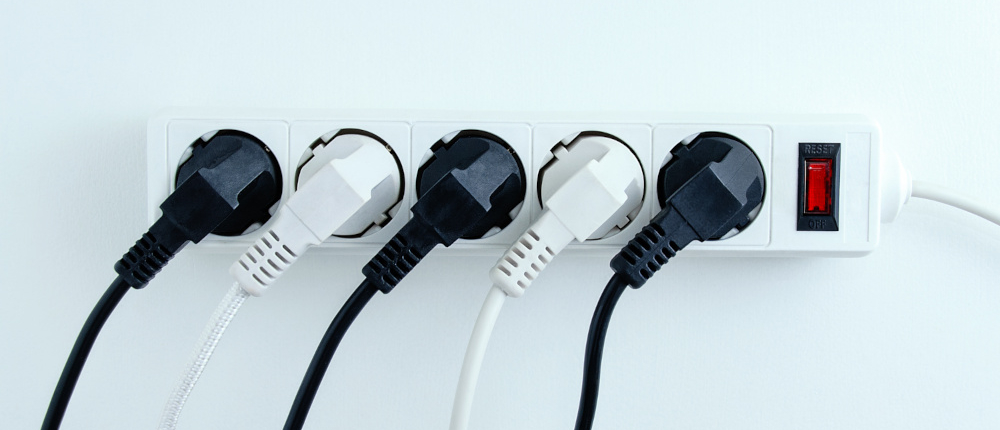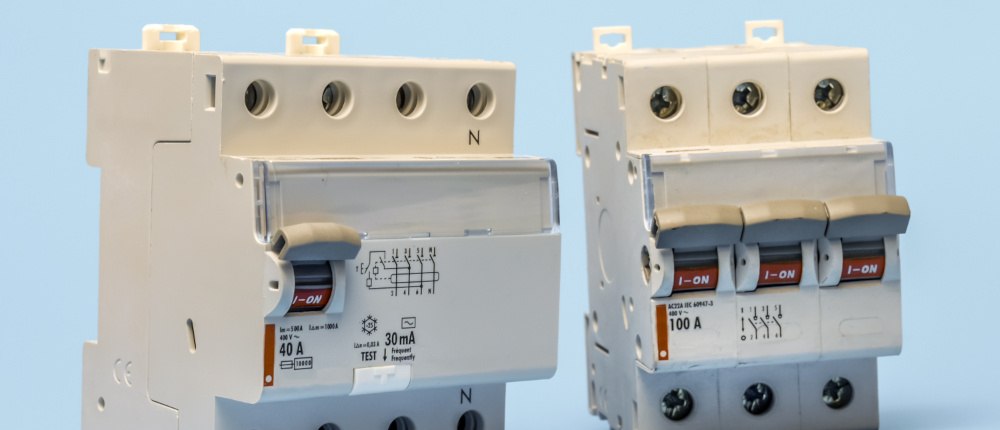How Do Surge Protectors Work?
Electrical safety at work is extremely important. Every year, there are a number of workplace accidents and fatalities that occur as a result of electrical hazards. Employers have a responsibility to provide a safe working environment for their employees, and employees need to be aware of the dangers of electricity in the workplace. There are a number of simple steps that can be taken to reduce the risks of an electrical accident. In this Article we’ll look at Surge protectors and residual current devices.
Surge Protectors
Surge protectors work by diverting or dissipating the extra voltage away from your electronics and into the ground. This is done through a process called “clamping.” Clamping is when the voltage is diverted through a conducting material, like metal, that can handle the high voltages without being damaged. Furthermore, surge protectors have a maximum voltage that they can handle before they are damaged. This is why it is important to choose a surge protector with a high enough voltage rating for your needs.
The voltage of a surge protector is listed in two ways: the maximum continuous voltage and the maximum surge voltage. The maximum continuous voltage is the amount of voltage that the surge protector can handle on a continual basis without being damaged. The maximum surge voltage is the amount of voltage that the surge protector can handle for a short period of time before it is damaged.
Most surge protectors have a maximum continuous voltage of 240 volts and a maximum surge voltage of 6,000 volts.
Choosing a Surge Protector
When choosing a surge protector, you should also consider the amperage rating. The amperage rating is the maximum amount of current that the surge protector can handle. Most surge protectors have an amperage rating of 10,000 amps.
You should also consider the number of outlets that you need. Most surge protectors have between six and 12 outlets.
Finally, you should consider the warranty when choosing a surge protector. Most surge protectors come with a limited warranty that covers damage to your electronics. Some surge protectors also have a replacement guarantee in case the surge protector itself is damaged.
Now that you know how surge protectors work, you can choose the best one for your needs. Be sure to consider the voltage rating, amperage rating, number of outlets, and warranty when making your decision. Lastly, surge protectors are an important part of protecting your electronics from damage. By understanding how they work, you can choose the best surge protector for your needs.
View the video- ‘How Do Surge Protectors Work?’
Other Electrical Safety Solutions
Residual Current Device?
A residual current device (RCD) is a safety device that is used in electrical circuits. It is designed to break the circuit if there is an imbalance between the live and neutral conductors. This prevents electrical shocks and fires from happening. In addition, RCDs are important because they can save lives. They are particularly useful in areas where there is a risk of electrocution, such as bathrooms and kitchens.
RCDs are also known as ground fault circuit interrupters (GFCIs).
How Does an RCD Work?
RCDs work by constantly monitoring the current flowing through the live and neutral conductors. If there is a difference between the two, it means that there is a leakage of current somewhere. This could be due to a faulty appliance or a person coming into contact with a live conductor.
When the RCD senses an imbalance, it will break the circuit. This prevents any further current from flowing and protects people from electrical shocks.
Choosing an RCD
When choosing an RCD, you need to consider the following:
- The voltage of your electrical circuit: You need to make sure that the RCD can handle the voltage of your circuit. For example, if you have a 240-volt circuit, you will need an RCD that is rated for 240 volts.
- The current rating of the RCD: The current rating is the maximum amount of current that the RCD can handle before it trips. You need to make sure that the RCD has a high enough current rating for your needs.
- The time taken for the RCD to trip: The time taken for the RCD to trip is known as the “trip time.” You need to make sure that the RCD has a fast enough trip time for your requirements.
- The type of RCD: There are two main types of RCDs: those that are designed for use with alternating current (AC) circuits and those that are designed for use with direct current (DC) circuits.
- The brand of RCD: There are many different brands of RCDs available on the market. You need to make sure that you choose a reputable brand that has a good reputation for quality.
- The price of the RCD: RCDs can vary in price depending on the features that they offer. You need to make sure that you choose an RCD that is within your budget.





